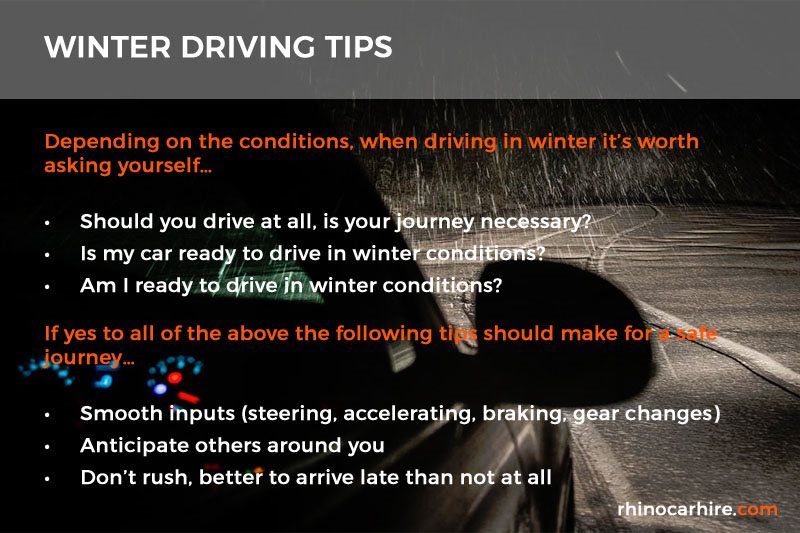As we’ve discussed in our Winter Driving Advice articles, driving in winter conditions poses many challenges for drivers. In this article we offer advice and tips of how you can make your journey in winter as safe as possible.
Should I drive at all?
The first question to ask yourself, is do you need to drive at all? The Met Office offer regular advice as conditions change and you should take note of these before travelling. A red weather warning would usually advise against all but essential travel as the current, or forecast weather carries a risk to life. Congestion on the roads during severe weather is more likely to result in major delays as whilst you may not get stuck, others around you might. When the Met Office / Police advise against all but essential travel, you should heed their warnings and not drive.

Ok, it’s safe to drive, is my car ready?
Whilst you should always check that your car is fit for the road (annual MOT tests aside), it’s even more important during winter, the following
winter car maintenance checks are recommended;
- De-ice / clear the windscreen – clear all windows to ensure you have clear visibility, don’t get caught out by winter driving laws you may not be aware of.
- Check your tyres – the legal limit is 1.6mm of tread across the central 75% of the tyre, however in winter it’s recommended that you have at least 3mm to aid traction. Winter tyres are recommended, more information here.
- Check your fuel – aim to keep your fuel tank at least half full in case you have to change your plans / route.
- Have you got your winter emergency kit for your car?
- Check your lights - lights are even more important in winter / poor driving conditions.
Ok, it’s safe to drive, my car is ready, am I ready?
Consider your
winter driving emergency kit and check you have everything you need in the car, for both your car and yourself. Other useful tips;
- Plan your route and an alternative if case your planned route is blocked
- If you are meeting someone, tell them when you are leaving and how long you anticipate your journey to take
- Don’t rush, it’s better to arrive late than not at all
- Have you got your winter survival kit in your car?
Ok, it’s safe to drive, my car and I are ready, how should I drive?
The main hazards of winter driving are the wet and extreme cold conditions. This could be heavy rain, snow and / or ice (
what is black ice and how can you spot it?). All of these will reduce the physical grip between the tyres on your car and road. This is ultimately the only physical connection between you and the road and it is this grip level that will determine how safe you are on the road. The following winter driving tips should reduce wheelspin / skidding to help avoid accidents and allow you to drive as safe as possible in winter.
- Pull away with low revs, or where possible in second gear to reduce the chance of wheelspin
- Smooth inputs (steering / accelerating / braking / gear changing) are essential
- Anticipation of conditions, particularly others around you, could prevent an accident
- Slow down BEFORE going down hill, use your gears and try not to brake
- Leave plenty of space going uphill to avoid having to stop / start on a slippery hill
- If you do get stuck, straighten the steering and clean snow from around the driven wheels
Comments